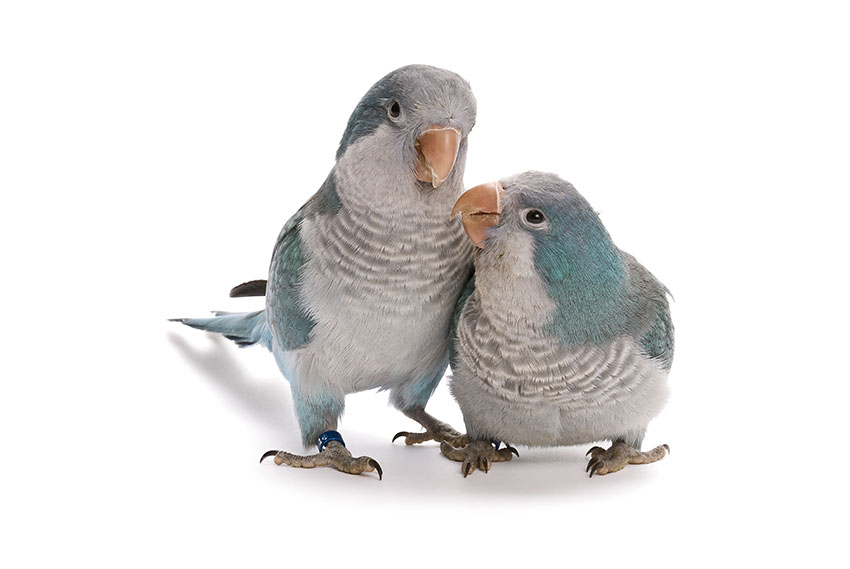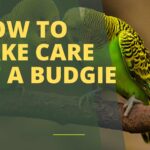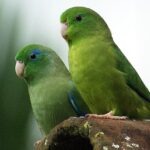Quaker parrots typically breed once or twice a year. Breeding season usually occurs in spring and early summer.
Quaker parrots, also known as monk parakeets, are small, bright-green birds with a penchant for social interaction and complex nest-building. They are a popular choice among bird enthusiasts due to their playful nature and impressive mimicry skills. Native to South America, these birds have adapted to different environments and can now be found in various regions across the globe.
How Often Do Quaker Parrots Breed? As prolific breeders, they create large, communal nests that can house multiple pairs, each with its own chamber to raise their young. Quaker parrots’ breeding habits, including the frequency of breeding seasons, are influenced by factors such as climate, food availability, and overall health.
The Quaker Parrot Breeding Cycle
Quaker parrots, also known as monk parakeets, showcase a unique breeding cycle that fascinates bird enthusiasts. Understanding their breeding habits is vital for proper care in captivity. This cycle varies based on environmental cues and human influence. Let’s explore the nuances of their reproductive patterns.
Natural Breeding Season
Quaker parrots breed once a year in the wild. Their breeding season aligns with warmer climates, ensuring ample food supply for their chicks. In their native habitat, this typically falls during spring and summer months.
Key points during the natural breeding season include:
- Preparation of nests – Quakers skillfully build complex nests from twigs.
- Mating – Occurs as daylight hours increase.
- Laying eggs – Females lay 4-8 eggs per breeding season.
- Hatching – Chicks hatch after about 24 days of incubation.
Breeding Frequency In Captivity
In captivity, Quaker parrots can breed more frequently. The controlled environment and constant food supply remove seasonal restraints.
Factors that influence breeding in captivity include:
| Environmental Conditions | Availability of Mate | Diet and Nutrition |
|---|---|---|
| Stable and warm habitat | Presence of a suitable partner | Quality feed for breeding readiness |
Breeding up to 2-3 times a year is possible under optimal conditions. Yet, for the parrot’s health, most breeders limit it to once a year.
Factors Influencing Breeding Frequency
Understanding the breeding frequency of Quaker Parrots is crucial for potential owners and breeders alike. Several factors play pivotal roles in determining how often these lively birds will reproduce. By delving into the nuances of their environment, diet, and overall health, we gain insight into their breeding habits. Let’s explore these factors in more detail, shining a light on what makes Quaker Parrots ready to nest.
Environmental Conditions
Quaker Parrots thrive in environments that mimic their natural habitat. Factors such as temperature, lighting, and the availability of nesting materials influence their readiness to breed. Ideal conditions foster a sense of security, encouraging reproductive behavior. Birds in captivity require careful attention to environmental cues to simulate the seasons and promote breeding cycles.
- Stable temperatures around 70°F (21°C)
- Extended daylight hours using artificial lighting
- Access to safe nesting boxes and materials
Diet And Nutrition
The right balance of vitamins, minerals, and calories is paramount for breeding Quaker Parrots. A nutrient-rich diet ensures they have the energy and health to reproduce successfully. Fresh fruits, vegetables, and high-quality seeds or pellets should comprise their daily intake. Provision of calcium and other supplements can further ready them for the demands of nesting and raising chicks.
| Dietary Components | Benefits |
|---|---|
| Fruits & Vegetables | Vitamins and hydration |
| Pellets or Seeds | Essential nutrients and energy |
| Calcium Supplements | Strong eggs and bone health |
Age And Health
Quaker Parrots’ ability to breed is closely linked to their age and overall health. Mature birds, typically over two years old, are more likely to breed successfully. Regular health checks, absence of stress, and a serene environment contribute to their wellbeing. Birds in prime health exhibit more vigorous mating behavior and greater resilience during the breeding process.
- Optimal breeding age: 2 to 8 years
- Annual health assessments by a veterinarian
- Maintenance of a stress-free living space
Identifying Breeding Behaviors
When Quaker parrots get ready to breed, they show some special behaviors. Spotting these can help bird owners predict breeding times. Let’s dive into the fascinating world of Quaker parrots’ love life.
Courtship Rituals
Quaker parrots display distinct courtship rituals. Understanding these signs is crucial for those observing or breeding these birds.
- Mating Calls: Loud and frequent calls signal a Quaker is ready to mate.
- Feeding: Males often feed females as a part of courtship.
- Head Bobbing: This rhythmic movement is a Quaker’s way to impress.
Nesting Habits
Quaker parrots are unique in their nesting choices. Watch for these behaviors to spot breeding readiness:
| Behavior | Description |
|---|---|
| Gathering Materials: | Birds collect twigs and leaves for nests. |
| Nest Building: | Mates work together, weaving intricate nests. |
| Nest Defense: | Birds become protective of their chosen nesting spot. |
Creating An Optimal Breeding Environment
Quaker parrots charm bird lovers with their sociable and affectionate nature. To ensure these lively birds breed successfully, creating the perfect environment is crucial. Let’s dive into how to make a cozy and safe breeding haven for these feathered friends.
Cage Setup And Security
Maintaining security and a proper setup is vital for breeding Quaker parrots. The breeding cage should be:
- Spacious and private to encourage mating behaviors
- Equipped with a sturdy lock to keep the doors securely closed
- Located away from noise and foot traffic to reduce stress
Ensure the cage has plenty of room for flight and exercise. This keeps the birds healthy and ready for breeding.
Temperature And Lighting Control
Quaker parrots breed well when they feel the conditions mimic their natural habitat. To create this:
- Maintain a stable temperature between 65-80°F (18-27°C)
- Provide 10-12 hours of consistent light daily
- Use adequate shade to offer relief from direct light
This controlled environment mirrors the natural lighting and warmth these parrots would experience in the wild.
Providing Nesting Materials
A cozy nest is essential for egg-laying and chick rearing. Quaker parrots appreciate:
- Softwood shavings or shredded paper for the nest base
- Natural fibers like cotton or jute for comfort
- Freedom to arrange nesting materials themselves
Offer a safe nesting box and materials, and watch as your Quaker parrots create a snug area to raise their young.
Challenges In Breeding Quaker Parrots
Breeding Quaker parrots presents unique challenges that enthusiasts should be aware of before starting. Understanding these hurdles is critical for the health of the birds and the success of breeding efforts.
Aggression Issues
Quaker parrots can exhibit intense territorial behavior during breeding. This aggression can lead to injuries among birds. Breeders need to monitor interactions closely and may need separate spaces for each breeding pair.
Egg Binding
Egg binding occurs when a female parrot cannot pass an egg. This can be life-threatening. Signs include lethargy and a swollen abdomen. Immediate veterinary care is essential. Preventative measures include a diet rich in calcium and regular exercise.
Chronic Egg Laying
Some Quaker parrots lay eggs excessively, depleting their nutrient stores, leading to health complications. To prevent this, limit daylight hours and remove nesting material to discourage laying. Observing and adjusting their environment is vital to control this behavior.
Health And Care For Breeding Quaker Parrots
Quaker parrots, also known as monk parakeets, bring vibrant life to any home. These birds require specialized care to maintain their health, especially when breeding. A supportive environment ensures the health of both the parents and the upcoming chicks. From veterinary support to proper nutrition, there are critical steps to follow for successful breeding. Careful attention during this time is vital.
Veterinary Support
Regular check-ups with an avian vet are crucial for breeding Quakers. Health assessments prevent potential complications, ensuring the breeding process is as smooth as possible for your feathered friends.
Proper Feeding During Breeding
- Fresh fruits and vegetables
- High-quality seeds and pellets
- Calcium supplements for egg-laying
Nutritious diets are vital for Quaker parrots during breeding. A balanced mix of fruits, vegetables, seeds, and pellets supports their energy needs. Avocado and chocolate are toxic to birds. Never feed these to your Quakers.
Monitoring Health Of Parents And Chicks
Keep an eye on the parent birds’ behavior and weight. Unusual changes might signal health issues. Observe the chicks for proper growth and development milestones.
| Age | Milestone |
|---|---|
| 2 weeks | Eyes open, feather growth begins |
| 4 weeks | Feathers develop, start to perch |
| 6 weeks | Weaning starts, first flight attempts |
Understanding Quaker Parrot Clutch Size
Quaker Parrots, also known as Monk Parakeets, are charming birds popular among pet enthusiasts. A crucial aspect of their breeding habits is clutch size. This refers to the number of eggs a Quaker Parrot lays at one time. Clutch size can vary based on several factors. Comprehending these can help Quaker Parrot owners anticipate and prepare for their pet’s breeding needs.
Typical Clutch Size
Quaker Parrots lay between four to eight eggs per clutch on average. They typically have one or two clutches per year. After laying, the female incubates the eggs for about 24 days until they hatch.
Factors Affecting Clutch Size
Several elements influence how many eggs a Quaker Parrot might lay:
- Age: Younger parrots tend to lay smaller clutches.
- Health: Good nutrition and physical condition favor larger clutches.
- Environment: Stress-free surroundings can enhance clutch size.
- Season: Breeding season peaks can result in more eggs.
| Factor | Effect on Clutch Size |
|---|---|
| Age | Younger birds lay fewer eggs. |
| Health | Healthier birds tend to have larger clutches. |
| Environment | A calm environment may lead to more eggs. |
| Season | Peak seasons can increase clutch size. |

Credit: www.omlet.co.uk
The Hatchling Phase
The Hatchling Phase is a precious time in the life cycle of Quaker parrots. After meticulously preparing the nest and engaging in the ritual of laying eggs, the parents eagerly await the emergence of their young. Watching the little ones break through their shells marks the beginning of an endearing yet critical period: both demanding and fulfilling for parrot parents and bird enthusiasts alike.
Incubation Period
Quaker parrots incubate their eggs for approximately 24 days. During this time, the parents share the duty of keeping the eggs warm. Successful hatching depends on a constant temperature and humidity, which the parrots diligently maintain. Once the eggs hatch, the parents’ commitment intensifies as they embark on the journey of rearing their offspring.
Caring For Newborn Quaker Parrots
Right after hatching, newborn Quaker parrots are helpless and require careful attention. They are born blind, with their eyes remaining closed for the first two weeks. Young hatchlings have a tremendous appetite, stimulating frequent feeding by the parents. The feedings consist of regurgitated food, providing vital nutrients for the chicks.
Monitoring growth and development during this stage is crucial. Proper growth benchmarks include weight gain, feather development, and strength. Here’s a brief look at the growth stages:
- Day 1-2: Hatchlings weigh around 4 to 5 grams and appear pink with a sparse white down.
- Week 1: They start gaining weight rapidly, almost doubling in size.
- Week 2: Pinfeathers begin to appear, and eyes start to open.
- Week 3-4: Features become more defined as feathers emerge.
- Week 5: Chicks resemble mini versions of their parents and become more active.
Ensuring a clean and warm nest is also part of caring for the hatchlings. The bedding should be changed regularly to prevent infection. Moderating the nest’s temperature is critical for the well-being of the chicks, especially in the initial weeks post-hatching.
Coping with this delicate stage is demanding but also brings the joy of observing the dynamic growth of Quaker parrots. By providing optimal care, you help pave the way for these charming birds to mature into healthy, sociable, and spirited companions.
Legal And Ethical Considerations
When breeding Quaker parrots, it is vital to consider legal and ethical guidelines. Breeding these birds requires attention to rules to ensure their welfare. This section explores breeding permits and responsible breeding practices. These factors are crucial for the health of the birds and the legality of the breeding process.
Breeding Permits
Breeding Quaker parrots may require a permit. Laws vary based on location. Check local regulations before starting. Failure to do so can lead to fines or penalties. Permits ensure population control and prevent illegal trade.
Responsible Breeding Practices
Responsible breeding goes beyond legal compliance. Breeding should prioritize the health and well-being of the parrots. Breeders should provide:
- Healthy environments for the birds to live and breed in
- Nutritious diets tailored to breeding birds
- Regular health checks by a veterinarian
- Enough space to prevent overcrowding and stress
- Proper care for any babies, including hand-rearing if necessary
By adhering to these guidelines, breeders contribute to the sustainable future of Quaker parrots.
The Role Of Genetics
Understanding the role of genetics can provide insights into how often Quaker parrots breed. Genetics play a crucial part in the health, behavior, and reproductive patterns of these vibrant birds. Let’s delve into the elements of genetics that influence Quaker parrot breeding.
Selective Breeding
Quaker parrots, also known as monk parakeets, sometimes undergo selective breeding. Breeders choose parrots with desired traits to produce offspring with those characteristics. This can include factors like color, temperament, or vocal abilities. Selective breeding can affect how often these birds reproduce, especially under controlled conditions.
- Color Variations
- Temperament Selection
- Health Considerations
Genetic Diversity
Genetic diversity is key for the survival of any species, including Quaker parrots. A diverse gene pool ensures resilience against diseases and encourages healthy breeding cycles. Breeding between genetically varied parrots can lead to more frequent and successful reproduction events.
| Genetic Factor | Effect on Breeding |
|---|---|
| Mutation | New Traits |
| Hereditary Health | Reproductive Success |
| Inbreeding | Reduced Fertility |
It’s essential to prevent inbreeding, as it often leads to fertility problems. Genetic diversity avoids these issues, allowing Quaker parrots to breed more effectively and often.
Conclusion
Understanding the breeding habits of Quaker parrots is key for any enthusiast or breeder aiming to provide optimal care. These social birds typically breed once or twice a year, aligning with their natural cycles and environmental conditions. Adequate knowledge and responsible practices ensure the health and well-being of both the Quaker parrots and their offspring, paving the way for a thriving aviary community.
Ryan Everhart is a passionate bird enthusiast and blogger, primarily writing on his website, Avian Whispers. His journey into the world of bird blogging began with a deep interest in parrots, a species that captivated his attention for their intelligence and social behavior. Over time, his content expanded to cover a broader range of bird species, offering insights into bird behavior, care, habitats, and conservation.
Ryan is dedicated to educating his audience, which includes both new bird owners and seasoned enthusiasts. His writing is filled with personal experiences, expert knowledge, and practical advice on bird care. Through Avian Whispers, he aims to foster a deeper appreciation for birds, emphasizing their role in nature and the joys of having them as pets.
Starting with articles focused on parrots, Ryan’s work now encompasses a diverse range of topics such as feeding, training, habitat enrichment, and bird health. His love for birds extends beyond parrots, diving into various avian species. His informative and heartfelt writing reflects his commitment to the well-being of birds and the desire to help others connect with these creatures.
As a growing voice in the bird blogging community, Ryan strives to provide a platform where bird lovers can learn, share experiences, and connect over a shared passion for avian life. His blogs are not only educational but also serve as a reminder of the importance of protecting and nurturing the bond between humans and birds.




